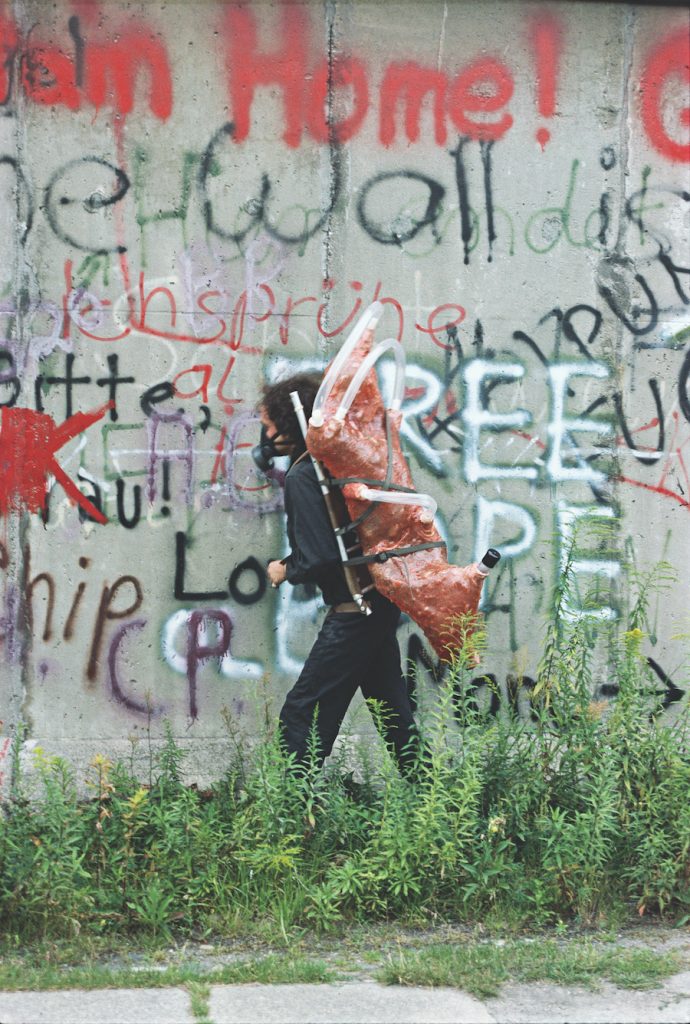
François Morelli “Trans-Atlantic Walk 1945-1985” Berlin Wall (1985) (Leonard Bullock)
As part of the release of the hardcover/ e-book release of my book, Walking as Artistic Practice (softcover comes out in April!), I’m going to be publishing some brief interviews with the various artists, authors, researchers, creatives, collectives, and platforms whose art practice, written material, or other works I cite and mention.
My 15th interview in this series is with François Morelli. Born in Tiohtià-ke (Montreal), François Morelli has been performing and exhibiting his work since 1974. Since, his practice has been interdisciplinary, performative, and relational. He began teaching in 1981 and retired from Concordia University in 2019. He shares his life with the art and design historian Diane Charbonneau and their son the art historian and performance artist Didier Morelli.
EM: First, thank you for chatting with me about your work Transatlantic Walk 1945-1985 (1985). I cite your work in chapter six (Rituals) in the subsection on “Contemplation.” How would you describe the work for people who might not be familiar with it?
FM: Walking and collecting water from fountains, canals, and rivers in five European and three American cities, the Transatlantic Walk 1945-1985 began on August 6, 1984, at CheckPoint Charlie at the Berlin Wall on the 40th anniversary of the bombing of Hiroshima, and ended September 2, 1984, in Philadelphia. With ideas of fusion and fission in mind, when asked what I was doing I would say “I’ve been walking for forty years carrying my friend to America.” Contesting the tradition of commemorative public monuments, these ephemeral actions used public water sources to bathe, fill, care and heal my ailing counterpart. A peripatetic journey of site responsive symbolic actions, durational carrying while walking highlighted societal checks and balances while testing the limits of normative behavior. Built on these relational and kinesthetic dynamics, the work raised political, psychological, and environmental concerns of a post-nuclear existence.
EM: What are your thoughts on walking as artistic practice?
FM: While the act of representing moving figures in motion captured the imagination of sculptors for centuries, the question today of mobility and freedom of movement remain central to art and the human condition. I began by walking lines that celebrated the space and time in between places and I have come to understand how these process driven actions intersected with others and led to a relational understanding of what it means to be human and an artist today.
EM: Can you tell us about any recent or upcoming projects you are excited about?
FM: With the 1916 calligramme poem Il pleut (1916) by Guillaume Apollinaire as a score, I will be walking in Montreal’s balancing a large Y shaped tree branch yoke on my shoulders. Fitted with small laboratory porcelain measuring cups, I will be using this this sculptural prosthesis to collect snowflakes and raindrops for a concurrent exhibition at the neighboring gallery. This month-long action and exhibition will feature water inspired art by Toronto based artsist Ed Pien and myself.